With resource and production assets in Australia, Chile and China, Tiangi Lithium, based in Chengdu, China, is believed to have controlled as much as 46% of global lithium production in 2018 © Tiangi Lithium)
If there was one commodity to follow in summer 2021, it was the soft, silvery white metal called lithium that when thrown into fire, flares into magnificent bright crimson.
Lithium from the Greek “lithos”, which means “stone”. Its price skyrocketed this summer to unprecedented levels, trading at 29,358USD per ton in October 2021.
Investors were so intensely focused on investing in electric vehicles (EVs) that they forgot these same cars need batteries to function, not to mention a whole process called the ‘supply chain’. Now, confronted with the shortage, the world is in the middle of a ‘chip crisis’ affecting more than 169 industries, from communications to pharmaceuticals, to smartphones to laptops, to cars, video games and consumer goods.
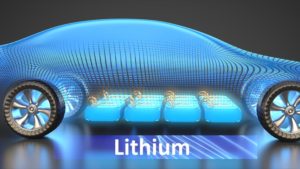
Lithium is a highly interesting metal; it is the lightest and softest known metal that can float on water and be cut with a kitchen knife. Also known as a mood lightener, it is used in the mental health industry and pharmaceuticals as a common treatment, helping to stabilise wild mood swings caused by bipolar disorder. Lithium is also present in the cosmos, produced by the bright celestial explosions; according to the Big Bang theory at the birth of the universe, lithium was one of the three basic chemical elements after hydrogen and helium. According to NASA, lithium should be present in abundance in the solar system and the galaxy, but somehow it is scarce, mostly due to its nuclear instability. This is a mystery known as ‘The Cosmological Lithium Problem’. This magical substance that has come to the attention of the mass media only recently, seems to keep surprising us in all sorts of ways.
With 8 million tonnes, Chile has the world’s largest known lithium reserves. Together with Argentina (2 million tonnes), they make South America the biggest reserve of the new gold, ahead of Australia (2.7 million tonnes), and China (1 million tonnes). Within Europe, Portugal has smaller quantities of the valuable raw material. The total global reserves are estimated at 14 million tonnes, corresponding to 165 times the production volume in 2018.
But not all those who have lithium are rich. At least a quarter of the global lithium reserves cannot be developed in the near future due to political issues – for example in Bolivia – and lack of technical knowledge, lack of infrastructure and access to water.
Other than that, the shortage in semiconductors was also very much related to the pandemic; due to the large scale lockdown in 2020, the chip factories didn’t produce as much as they did in previous years. Furthermore, the US-China trade war was a major influence, as the US manufacturing plants were unable to buy the Chinese chips, and China was reluctant to make any sales to the US. So, the US turned to Taiwan – accounting for more than 50% of the global market in 2020 – and to South Korea. Samsung was already producing at maximum capacity and demand was so high that they too got exhausted.

US companies then looked desperately for semiconductor suppliers anywhere they could. But then, as luck would have it, the Japanese Renesas Electronics Corporation that was supplying 30% of the global output, caught fire in March 2021, delaying the production by at least three months. The odd timing of the fire has raised questions about the accident; for instance, whether the trade war was not encroaching on other sensitive areas.
On the side of the law-makers, under the Paris agreement signed in 2015, the European Climate Law is working to get the world on track for net-zero emissions by 2050, in order to prevent a climate catastrophe. According to the International Energy Agency (IEA), to achieve this goal, an annual investment of 4 billion dollars in clean energy is required; this represents three times the current investment. The law also sets the intermediate target of reducing net greenhouse gas emissions by at least 55% by 2030.
In January 2021, the American car giant General Motors announced plans to stop selling petrol-powered and diesel models by 2035 and to become completely carbon neutral by 2040. The German automobile manufacturer Audi also announced that it will cut production of such vehicles by 2033, and it is expected that many other automotive producers will follow suit and issue similar road maps. By 2035, half of the vehicles produced worldwide will thus be electric, driven by consumer initiative and private demand. But all these cars will need lithium.
This means that hundreds of millions of vehicles will hit the roads, carrying massive batteries, each containing tonnes of materials that are yet to be mined; the same stuff that today is very scarce and expensive. It is predicted that 140 million electric vehicles will be on the roads worldwide by 2030. This means that 140 million EV batteries will need to be produced by 2030. Each EV battery consists of 30-40% of valuable cathode material by weight, and even if the lithium percentage in the lithium-ion battery accounts for only 7%, the total amount of lithium needed for 140 million vehicles equals 3,000kt of lithium content.
According to these calculations from the IEA, there is a high probability that the currently known natural reserves of lithium would run dry during our lifetime.
Right when the market is confronted with the dilemma on semiconductors, another predicament on the global energy market is hitting us with full force. With skyrocketing coal costs, gas prices have skyrocketed and there are predictions for oil prices reaching 100$ per barrel. These prices are unprecedented since 2008.
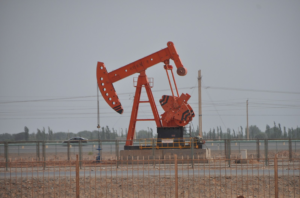
The cold winter of 2020 followed by the summer heat waves, compounded by the post-lockdown fuel demand, especially in China, India and the US have all added to the 2021 energy crunch. It should be kept in mind that one of Europe’s biggest natural gas onshore fields at Groningen will be closing by 2022, after it was hit by an earthquake in 2018.
Furthermore, due to the ESG (Environmental, Social, and Governance) investment guidelines with new regulations imposed on fossil fuels, as well as the latest European Union taxation on carbon emissions have caused many investment companies to withdraw their funds from coal and fossil mining industries in recent years, hence contributing to the shortage of traditional energy.
In Europe in early October, natural gas was trading for the equivalent of 230$ per barrel, in oil terms – up more than 130% since the beginning of September, and more than eight times higher than the same period last year, according to data from Independent Commodity Intelligence Services.
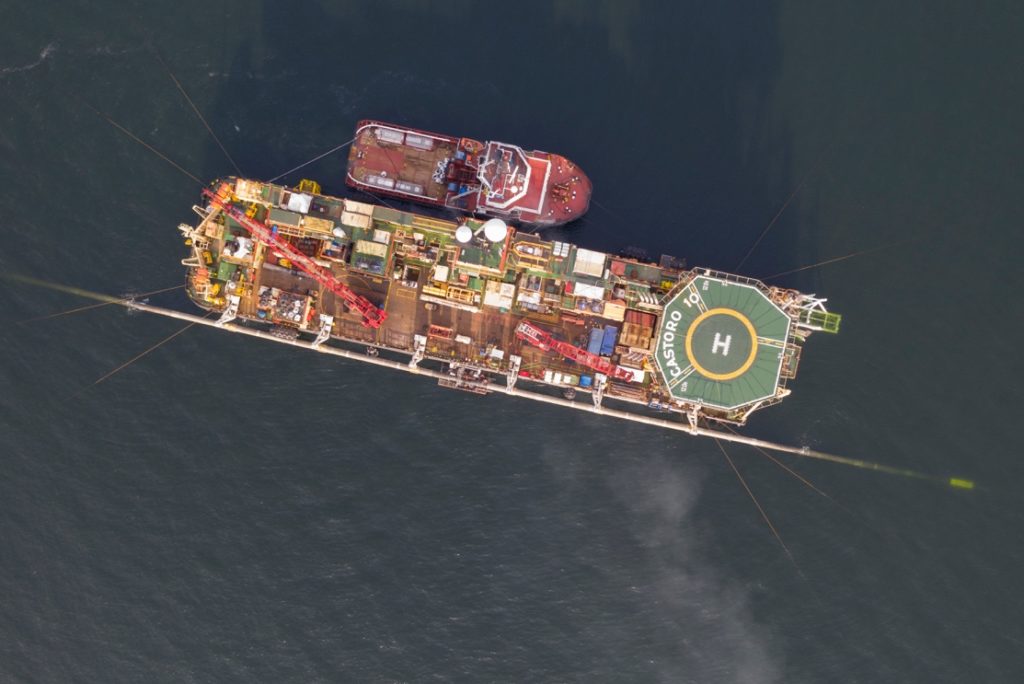
But of course, oil and gas are inseparable from geopolitics; the declining European gas reserves have left a large gap in the output, hence more sway to Russia which provides one third of the European gas.
Yet, in the midst of a European gas shortage, the Russian state-controlled gas giant Gazprom PJSC has this year, rejected the 15% extra gas supplies to Europe, forcing analysts to believe that the Kremlin is using the current energy crunch as a tool to pressurise the West on the Nord Stream 2 project. This is a $10 billion pipeline carrying natural gas from Russian fields to the German coast, spanning 1230 kilometers under the Baltic Sea. Gazprom PJSC has said it is fulfilling its contractual obligations, a statement confirmed by the companies receiving gas.
Once operational, the intercontinental conduit is supposed to double the imported gas volume of the original 2011 Nord Stream, which runs parallel to the new project, supplying gas to Germany – Europe’s largest industrial nation and heavily reliant on gas and oil imports – at a relatively low cost, as the continent ‘s production capacity decreases.
The Russian president, Vladimir Putin has said that the gas shortage in Europe can be solved easily once the Nord Stream 2 pipeline is approved. Although technically ready, the pipeline is still waiting for the German regulators’ green light which has been slow to materialize, amid Europe’s various programmes to decarbonise and abandon fossil fuels. Given the tensions around the project since its inception, one can wonder about its geopolitical repercussions. Although Germany and Russia insist that the project is exclusively economic and energy-focused, other countries see major political stakes at play.
The Nord Stream 2 project is sponsored by the Russian Gazprom, the German Wintershall and Uniper, the French ENGIE, the Austrian OMV, and Royal Dutch Shell. However, the US opposes the project along with many Eastern European countries relying on the Russian gas that currently passes through Ukraine.
The Czech Republic, Hungary, Poland, the Slovak Republic, Romania, Estonia, Latvia, Lithuania, and Croatia are all highly dependent on Russian gas.They are in fact, under the domination of Russia which can, with just one flick of the switch, turn off supplies anytime it feels it has been wronged in any way.
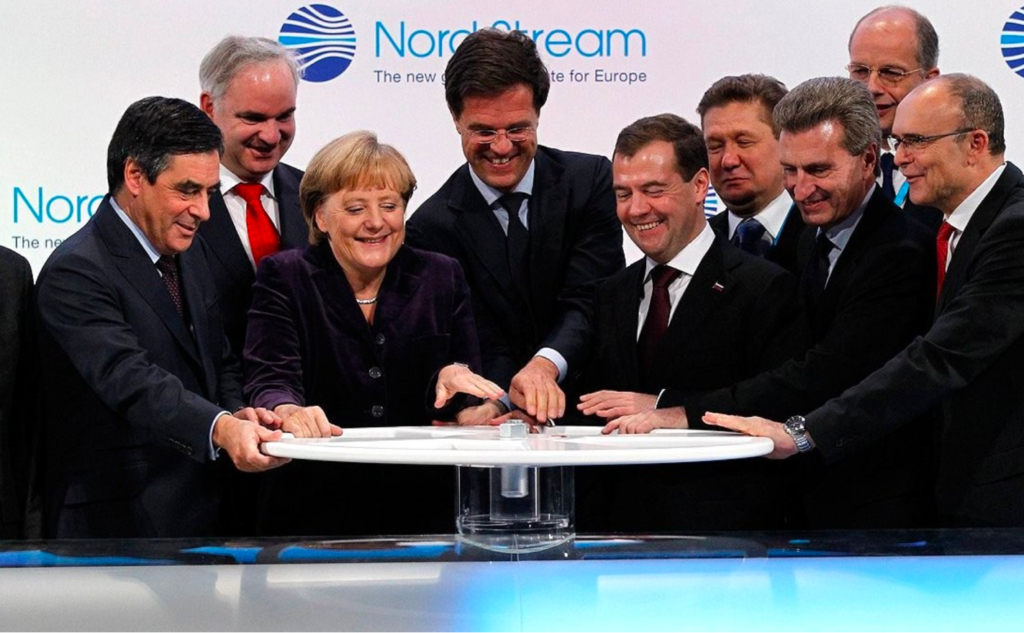
In previous disputes between Russia and Ukraine, Moscow simply turned off its gas supplies to Ukraine, leaving millions of Europeans without gas during the winter months of 2006 and 2009.
Once the Nord Stream 2 is up and running, it will generate over 2 billion dollars per year in transit fees, a crucial source of income for Ukraine’s battered economy. Italy is in the same position; the country’s main supply of natural gas is delivered through Ukraine.
Some argue that not only is the Nord Stream 2 pipeline extremely expensive (the cost of repairing the current Ukrainian route is estimated at about $6 billion compared to the $10 billion price tag for Nord Stream 2), but also according to some studies, Germany is not in crucial need of extra gas.
Over the past several years, Germany has consumed between 85 billion and 90 billion cubic meters of natural gas annually, importing about one-third from Russia, a further third from Norway and about 30 percent from the Netherlands. The rest comes from domestic sources. It has been speculated that this arrangement would suggest that an additional 55 billion cubic meters of supply (the potential capacity of Nord Stream 2) would not be necessary.
So, why is it that despite the pipeline being so politically charged, unnecessary in terms of energy supply, too expensive and incompatible with the EU energy and climate goals, Germany has insisted on this project?
One could argue that the prospects of securing a lifetime’s supply of cheap gas versus prospects of declining European reserves, has made the deal worthwhile despite all the diplomatic complications. Or perhaps, the prospect of becoming Europe’s nerve centre for natural gas imports in the midst of an energy shortage is too attractive to ignore.
The heart of the matter is not who is selling gas to whom, but rather, the development of the renewable energy sector. A decarbonised economy is not good news for Russia, nor for any other gas and oil exporting country. With half of the top Russian companies using traditional sources of energy and accounting for 40% of the country’s GDP, a green economy, in the long term, would mean depriving the Russian economy as well as the Kremlin from its main source of income. It is therefore not surprising that Russia is pushing to monopolise its position as the main energy exporter to Europe via Nord Stream 2, and is playing its hand at having the project up and running as soon as possible.
The cherry on top is the recent statement by the Belarusian President, Alexander Lukashenko – a protégé of Vladimir Putin – threatening to shut down Russian gas transiting through his country to Europe. This is of course directly linked to the Western sanctions following his disputed election victory in 2020. And now, he has been accused by the EU of intentionally luring migrants from Iraq, Syria and Yemen to his country, in order to facilitate their crossing into bordering EU member states such as Poland and Lithuania, in retaliation for the sanctions.
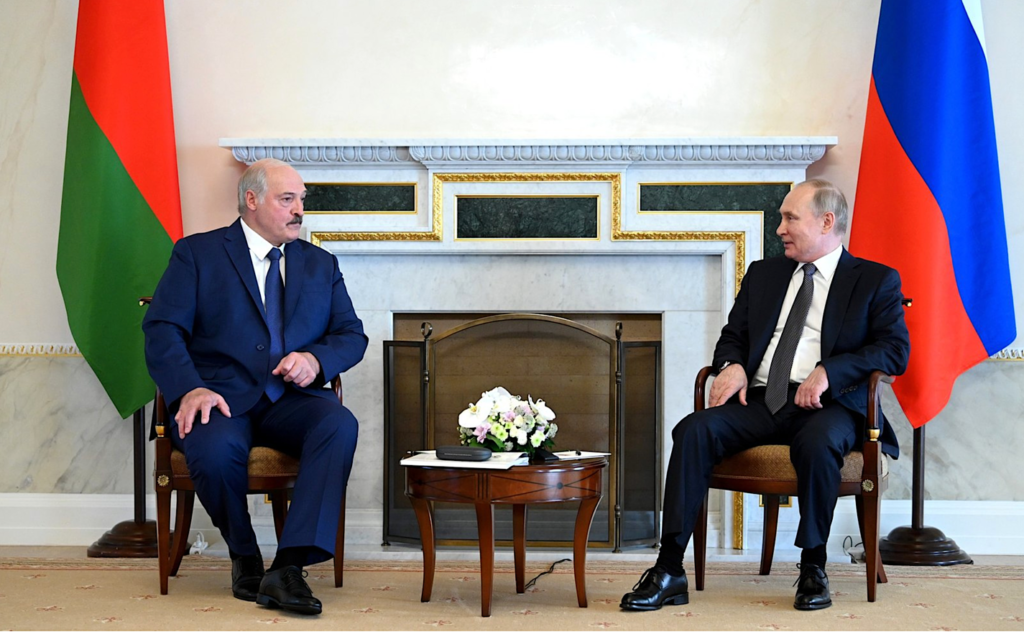
Facilitated by Belurusian travel agencies, the national carrier Belavia as well as Turkish Airlines have flown immigrants from Istanbul, Beirut and Dubai to the capital, Minsk, while Belarusians themselves are generally banned from traveling due to Covid-19 regulations. According to Reuters, there are even reports of immigrants being provided with wire cutters by Belarusian guards at the EU borders.
Manufacturing a ‘migrant crisis’ on the borders of the EU by using Belarus seems to be another card and leverage point that Putin may be trying to use in order to accelerate the Nord Stream 2 pipeline project. The Kremlin has naturally rejected the allegations.
In the meantime, while European gas reserves are drying up quickly, sustainable and renewable energies are not yet scalable replacements for gas and other fossil fuels.
An estimated 35 gigawatts growth of the global supply of renewables from 2021 to 2022, is by far not enough to meet the 100 gigawatts growth of the global power demand over the same period; there is clearly a gap to be bridged. With demand already spiking to pre-pandemic levels, the shortfall is expected to only widen as economies are about to reopen and international travel about to resume.
According to the French finance minister Bruno Le Maire, the EU should follow the French model, referring to nuclear energy that accounts for a large part of the market, resulting in the relative independence of France on the electricity market. Led by France, a group of ten EU countries consisting of Bulgaria, Croatia, Czech Republic, Finland, Hungary, Poland, Slovakia, Slovenia and Romania have asked the European Commission to recognise nuclear power as a low-carbon energy source and in line with the transition towards climate neutrality. While 26% of the EU’s electricity comes from nuclear power, the project is being strongly opposed by Germany who is planning to shut all its reactors by 2022, accompanied by Austria, Denmark, Luxembourg and Spain. The European Commission’s position on nuclear energy is not yet clear and it is expected that a decision will be forthcoming sometime in 2022.

So, with nuclear power facing opposition and natural gas being turned into a political tool, the only option left for now seems to be the good old-school coal. It is an economical and available commodity and yet considered by many as tragic and regressive for the climate. But in the short term, and considering the skyrocketing household energy bills, there seems to be little choice but to adopt a conservative approach in exchange for the missing back-up plan.
In the meantime, China is leading the renewable energy production figures; currently the world’s largest producer of wind and solar energy, four of the world’s five biggest renewable energy deals were made by Chinese companies in 2016. What’s more, over half of the electric vehicles produced are coming from China. It has invested heavily in lithium and therefore dominates the lithium-ion battery supply chain. By 2029, 101 lithium-ion battery plants out of 136 worldwide will be based in China. This means that the more Europe shifts towards the zero emission carbon system – that is to say electric vehicles – the more it will depend on China for fuel for the new cars.
The conclusion then, comes down to this : Given that a total energy independence is not yet possible, would it be preferable to contibue using natural gas and depend on Russia or to go electric and depend on China ?
As noble as this may sound, our era has to go through the first teething troubles of the historic transition from fossil fuels to green energy.
At the time of writing, a surprisingly warm and windy autumn so far has resulted in less overall gas consumption and more wind energy production. This has caused the Dutch TTF Gas future to go down from 160,00 EUR in September to 90,49 EUR in mid October.
Ultimately, nothing is written in stone, including energy prices which in the new age, will be at the mercy of the Gods and dependent on the mastery of the four elements, rather than the whims of Vladimir Putin and Greta Thunberg.

